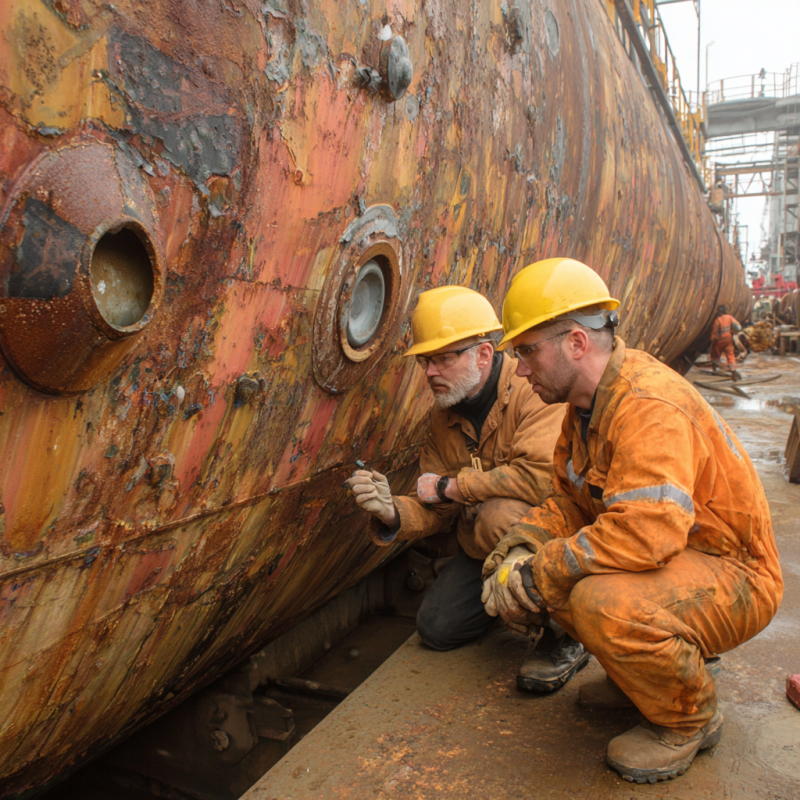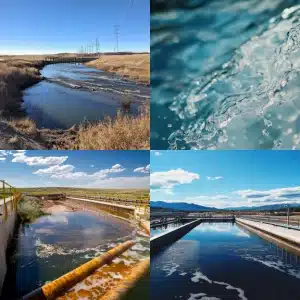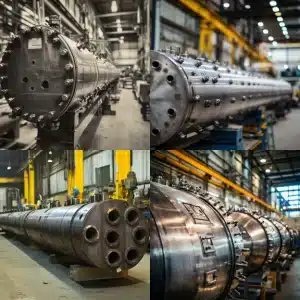
Understanding what causes pressure vessel failure is critical to preventing costly safety incidents and operational downtime. This guide explores the key failure triggers such as corrosion, material defects, and welding issues alongside analysis techniques and the benefits of prefabrication. Partnering with experts like Red River LLC ensures compliance, durability, and long-term system reliability.
Exploring What Causes Pressure Vessel Failure in Industries
Pressure vessels are critical to industrial operations like energy and water treatment. If you’re exploring what causes pressure vessel failure, you’re taking a key step toward minimizing downtime and improving safety. Even a small flaw can lead to serious consequences like leaks or shutdowns.
This article breaks down the main causes of pressure vessel failure, highlights the importance of thorough analysis, and explains how prefabrication can lower risk. You’ll also gain expert insight from Red River, an ASME-certified manufacturer known for reliable design and prevention strategies.
Explore What Causes Pressure Vessel Failure
When pressure vessels fail, the consequences can be severe: injuries, regulatory fines, and lost production time. According to Red River LLC, several core factors contribute to these breakdowns. Each one is essential to understand if you aim to keep vessels secure and operational.
Material Defects
Material defects include hidden cracks or impurities in the metals used for vessel construction. These flaws might result from poor-quality raw materials or improper handling during manufacturing.
- Undetected inclusions (tiny foreign materials within steel) may weaken structural integrity.
- Poor-quality alloys can fail to withstand cyclical pressure changes.
- Microscopic cracks may grow, especially if the vessel frequently operates near maximum pressure limits.
These weaknesses are often identified through comprehensive inspections and material failure analysis.
Design Flaws
Sometimes, even the highest-quality materials cannot offset a flawed vessel design. Red River LLC has noted that a well-planned design must account for:
- Expected operating pressures and temperatures.
- Sudden spikes in demand or flow rates.
- Corrosive or abrasive chemicals that may degrade internal surfaces.
Welding Imperfections
Whenever metal plates or components are joined, welding becomes a critical step. Welding imperfections range from hairline cracks to incomplete fusion. Common welding problems include:
- Porosity: small holes formed by trapped gases.
- Undercutting: grooves melted into the base metal but not filled with weld material.
- Lack of fusion: insufficient fusing between the weld and the base metal or between weld layers.
Corrosion Factors
Corrosion is a gradual but relentless threat. Chemicals, moisture, or even environmental humidity can eat away at metal surfaces. Key corrosion drivers include:
- Chemical reactions with reactive substances such as chlorides or sulfur compounds.
- High temperatures that accelerate oxidization.
- Poor surface treatments or coatings that fail to shield the metal.
External Hits
While internal factors (like pressure cycling) account for much of the risk, external impacts can also cause a sudden rupture. An accidental collision with a forklift, flying debris, or extreme weather can generate dents or cracks.
- Physical impacts can deform pressure vessel walls.
- Excessive vibration near the vessel might introduce new stress points or worsen existing weak spots.
- Major temperature swings (like those in outdoor installations) can cause expansion and contraction cycles, contributing to fatigue.
Explore the Role of Failure Analysis
Once you grasp these key risk areas, the next step is to investigate how professional failure analysis mitigates them. For instance, mechanical failure analysis digs into stress distribution throughout the vessel. Experts also use material failure analysis to identify micro-cracks or unusual wear patterns that standard inspections might miss.
Why Analysis Matters
A well-executed analysis pinpoints early warning signs to avoid catastrophic breakdowns. It also reveals ways to optimize vessel design and maintenance routines. Through consistent evaluations, you may uncover:
- Chronic overstress in certain vessel regions.
- Repeated micro-fractures spreading along welded joints.
- Hidden chemical reactions undermining the metal’s integrity.
Specific Analysis Methods
Depending on the suspected cause of failure, different analysis techniques come into play:
- Visual inspection: Simple but surprisingly effective. Experts look for visible signs of damage, discoloration, or distortion.
- Non-destructive testing (NDT): Ultrasonic, radiographic, or dye penetrant testing reveals concealed cracks or voids.
- Metallurgical testing: By examining metal samples under a microscope, specialists identify grain structure changes or inclusions.
- Corrosion failure analysis: This method checks how various chemicals or environmental conditions degrade the metal. For more, see corrosion failure analysis.
Innovation in Manufacturing
Analysis also drives innovation. Red River, for example, stays current with advanced materials and manufacturing methods (Red River LLC). By learning from each completed project, they refine vessel designs to withstand higher pressures or more corrosive environments. This knowledge loop leads to:
- More robust material selection, especially for demanding applications.
- Enhanced welding techniques that minimize fusion defects.
- Improved coatings or linings that offer prolonged protection from corrosive chemicals.
Ultimately, professional failure analysis is not a burden but an investment. By balancing design improvements with ongoing checks, you not only extend the lifespan of your pressure vessels, but also improve safety throughout your operation.
Use Prefabrication for Better Safety
Prefabrication, a process of assembling components in a controlled shop environment can also cut down on many risks that lead to pressure vessel failure. According to Red River LLC, prefabrication delivers several advantages over on-site builds:
- Reduced exposure hours: Fewer staff on a busy construction site means less risk for accidents or missed inspections.
- Consistent quality: Components are assembled in a specialized facility with strict quality control protocols.
- Lower insurance rates: With fewer on-site welds, you lower potential hazards and claims.
Cost Savings and Time Efficiency
An often overlooked benefit is cost savings. The entire process of shipping materials, conducting inspections, and finalizing installations is more efficient when done in a single location. Prefabrication eliminates waste, standardizes workflows, and speeds up final assembly. You also minimize rework because mistakes are caught early in a controlled setting, rather than after shipping equipment to a distant site.
Quality Assurance
Quality control is simpler in a dedicated manufacturing environment. Skilled technicians can perform precise welding, while inspectors can quickly perform NDT. Red River LLC outlines how these steps reduce the chance of final product failure:
- Detailed testing: Spot-checking weld seams for porosity or incomplete fusion.
- Material traceability: Recording each metal’s origin for quick reference.
- ASME compliance: Ensuring final checks by an authorized ASME inspector.
By choosing prefabricated pressure vessels, you lower the likelihood of missing critical flaws. As a bonus, you can often resume full operations sooner, since your equipment arrives ready for quick installation.
What Causes Pressure Vessel Failure
Pressure vessel failures often result from a combination of factors like material defects, weld issues, design flaws, and corrosion. However, these risks become manageable through strong design, thorough testing, and regular inspections. By taking a comprehensive approach including advanced analysis and prefabrication, you improve reliability, ensure safety, and maintain industry compliance.
Take Action Today with Red River
Ready to address what causes pressure vessel failure before it impacts your business? Contact Red River LLC today for ASME-certified vessels, advanced prefabrication methods, and expert failure analysis services designed to keep your operations running safely and efficiently.
Frequently Asked Questions
1. How to perform pressure vessel failure analysis?
Performing pressure vessel failure analysis involves collecting operational data, conducting visual inspections, performing non-destructive testing like ultrasonic or radiographic exams, and carrying out metallurgical lab tests. Engineers analyze this information to identify root causes and recommend improvements.
2. What are common pressure vessel failures?
Common pressure vessel failures include corrosion-induced thinning, fatigue cracking from cyclic stresses, brittle fracture due to low temperatures, weld defects, and failures caused by overpressure or improper material selection.
3. How often should I inspect a pressure vessel?
A regular inspection schedule depends on the vessel’s use. Many facilities conduct short visual checks weekly, plus detailed non-destructive testing annually or biannually. Refer to local regulations and manufacturer guidelines for specifics.
4. Does insurance cover pressure vessel failure?
It can, but terms vary widely between policies. Some plans might only cover specific causes or require strict adherence to maintenance schedules. Always review your policy to confirm coverage details.
5. Can corrosion be fully prevented?
Not entirely, but you can slow it significantly by using quality coatings, selecting corrosion-resistant materials, and performing routine cleanings. Specialized alloys often fare better in harsh chemical environments.
Key Takeaways
- Start early: Routine inspection and analysis can catch cracks or weaknesses before they lead to a catastrophic blowout.
- Know the factors: Material defects, design flaws, welding errors, corrosion, and external impacts are the main troublemakers.
- Leverage analysis: Pressure vessel failure analysis is a powerful tool for identifying hidden defects or stress points.
- Consider prefabrication: It reduces exposure hours on-site, boosts efficiency, and ensures tight quality control.
- Stay current: Innovations in materials and manufacturing constantly raise the bar for vessel performance and durability.




